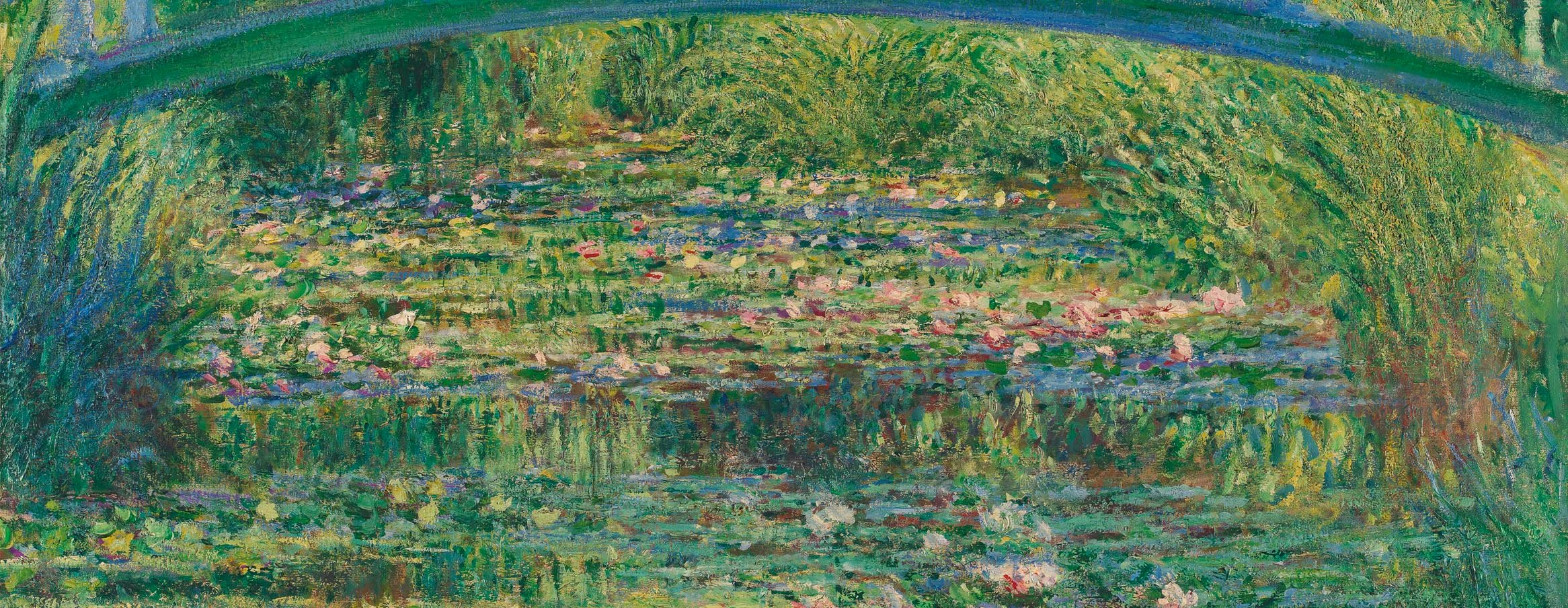
Claude Monet and his Water Lilies at the Musée de l'Orangerie
Nothing says “summer” like Claude Monet’s paintings of water lilies, inspired by the lily pond in his garden at Giverny in France. He had a passion for flowers, selecting different hybrids of water lilies in an effort to get as many different coloured flowers as possible, deliberately creating his garden as a motif for his paintings.
Monet painted a series of beautiful water lilies in a variety of colours evoking different moods. In the evening, for example, blues are darker and deeper, evoking a feeling of mystery or reflection. Water lilies have also been painted during sunset hours, providing the canvas with brilliant oranges and yellows creating a sense of warmth and passion. The paint in these paintings has been applied very loosely creating a sense of natural movement. Light is a key subject within these images. Monet has created the illusion of speckles of light in the waters; his lily paintings are some of his most popular and well-known, being synonymous with both the artists' name and the term 'Impressionism' generally.
The Musée de l'Orangerie is based in Paris, France. It holds a significant number of Impressionist and Post - Impressionist paintings, including a gorgeously rich selection of Monet's water lily artwork.


The Water Lilies series, or Nymphéas in French, is comprised of approximately 250 oil paintings created from 1896 to 1920 – the later years of Monet’s life. During this period, Monet is also thought to have suffered from cataracts. After Monet died in 1927, the Musée de l’Orangerie opened a permanent exhibition – a pair of oval rooms which became home to eight water lily murals by Monet, and in 1999 sixty water lily paintings were sourced from across the world for a special exhibition there.
The perspective, colours and lighting make each painting unique in spite of their repetitious subject matter, and Monet’s preference for working in a series in this way was also demonstrated as early as 1889 with his Valley of the Creuse paintings, which were first shown at the Galerie Georges Petit. Haystacks is another of his famous series, which we are also proud to represent on Bridgeman Images.
The Water Lilies series by Monet is one of the most well-recognised and celebrated modern artwork series of all time. Accordingly, they have sold for some of the highest prices on the art market. In June 2007 one of the Water Lily paintings sold for £18.5 million at a Sotheby’s auction in London. The following year, Le Bassin Aux Nymphéas sold for nearly £41 million at Christie’s - the initial estimate of £18 to £24 million had been considerably exceeded. In May 2017, the was placed on auction again, trading hands for $27 million. Finally, in London in June 2014 the painting Nymphéas sold for $54 million at a Sotheby’s auction. It next appeared in 2015 at the exhibition Painting the Modern Garden: From Monet to Matisse’ at the Cleveland Museum of Art and the Royal Academy of Arts, London.
French art dealer and historian Daniel Wildenstein has catalogued the Lilies series and the rest of Monet’s oeuvre in his Monet: Catalogue Raisonné. The central theme and end goal of the Water Lilies series, referred to by Monet as his ‘grandes décorations’ was a vision of a circular installation of his vast paintings, which would surround and immerse the viewer in a colourful expanse of water, botanics, greenery and sky. Water Lilies formed a part of this immersive experience, which in the age of immersive installations and exhibitions is finally a truer reality than ever.
Discover Monet's work in our archive by clicking here
Find out more about French art and museums








